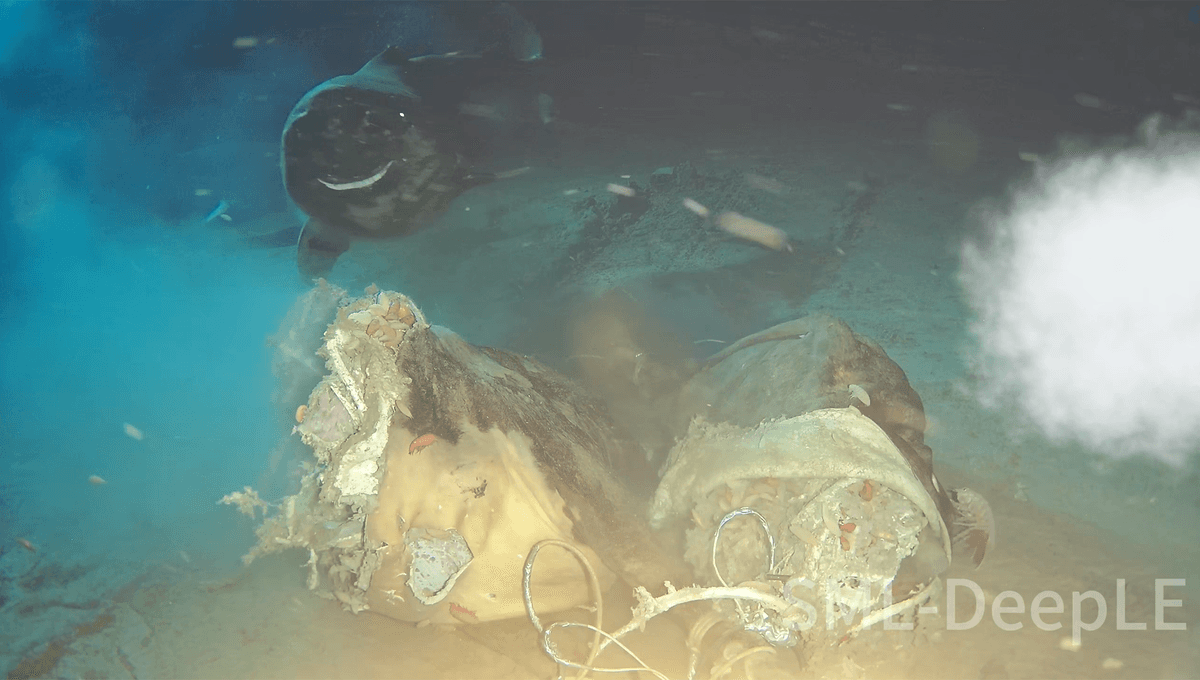
Getting accurate information on animal species can be quite a challenge, especially when they live deep within the sea. One of those animals is the Pacific sleeper shark (Somniosus pacificus), which, despite its widespread distribution, remains quite elusive – so it was a surprise to scientists carrying out an experiment in the South China Sea when eight of them turned up.
The scientists were planning to investigate the processes that occur when a whale carcass falls to the sea floor. To simulate this, they dropped a cow carcass at 1,629 meters (5,344 feet) deep on a continental slope near Hainan Island.
Video footage of the carcass in position then revealed some unexpected visitors in the form of eight Pacific sleeper sharks, the first known occurrence of the species in this region, and this provided some interesting new information.
It seems the sleeper sharks are quite a polite bunch, as the video recording shows both their predation behavior and a kind of queueing behavior. The researchers found that sharks in front gave up their feeding positions to individual sharks approaching the carcass from behind in the queue.
“This behavior suggests that feeding priority is determined by individual competitive intensity, even in deep-water environments, reflecting a survival strategy suitable for non-solitary foraging among Pacific sleeper sharks,” said Han Tian, from the Sun Yat-sen University and Southern Marine Science and Engineering Guangdong Laboratory in China, and author of the study describing the findings, in a statement.
In addition, the team found that sharks that were 2.7 meters (8.9 feet) or longer were more aggressive in attacking the cow carcass compared to the smaller sharks, which were more likely to be cautious and showed deliberate circling behavior.
“The highly aggressive behavior of sharks observed in the South China Sea suggests that this region still harbors abundant food sources in the deep sea. But what exactly are they? This question is intriguing for both animal distribution and behavioral research,” said Tian.
The team also spotted an eye retraction behavior, something they believe is a protective adaptation for the eyes during feeding, as Pacific sleeper sharks don’t have the “third eyelid” or nictitating membrane that’s seen in lots of other animal species, like cats and reptiles.
The footage further revealed that some of the sharks bore parasites in the form of copepods, though they could not be identified. Sleeper sharks are related to Greenland sharks, and both have been known to have parasites inside their eyes. Other organisms spotted in the video included snailfish and lots of deep-sea amphipod species.
While sleeper sharks are widespread and have been documented in waters in the North Pacific from Japan to Alaska, all the way south to Baja California and even the Tonga trench, they are typically thought to prefer colder waters. The species was accidentally seen near the Solomon Islands and Palau, which is thought to represent the furthest south of their distribution.
While it is interesting to see the sharks in a new area, it does bring into question whether this was always part of their range, or if it is an expansion related to climate change.
“Although Pacific sleeper sharks have also been found in the deep waters of their typical distribution range in the North Pacific, their frequent occurrence in the southwestern region of the South China Sea suggests that our understanding of this population remains significantly limited,” said Tian.
The study is published in Ocean-Land-Atmosphere Research.
Source Link: Scientists Dropped A Cow Carcass 1,629 Meters Into The South China Sea – And 8 Unexpected Visitors Turned Up